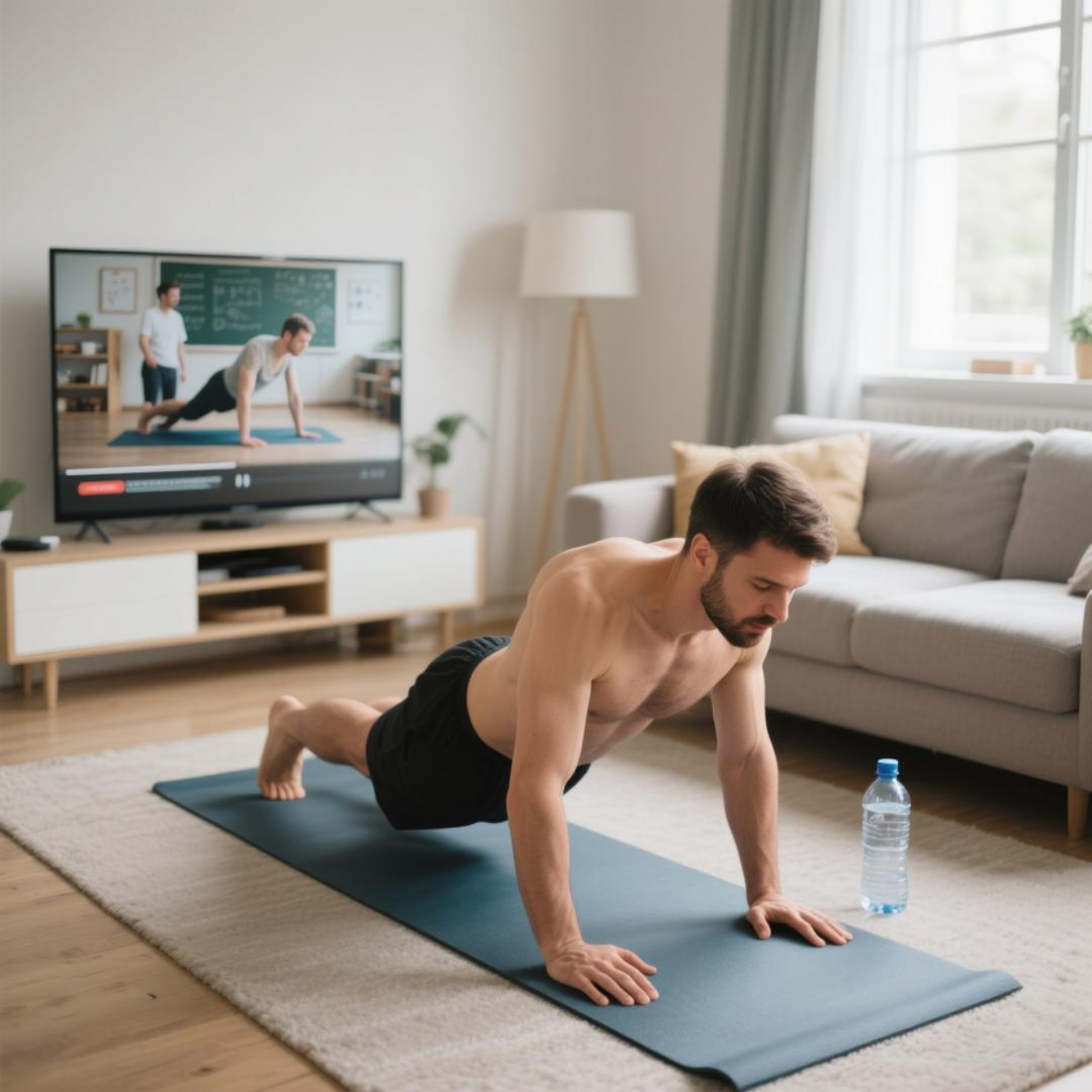Having an exercise routine even with little time is not just a health goal — it’s a realistic strategy to keep your body active, your mind balanced, and guilt far away, even with a busy schedule. Living a fast-paced life doesn’t have to be a barrier to daily movement.
The key is to change your mindset: it’s not about how much time you have, but what you do with it. Short, consistent, and well-targeted workouts can transform your quality of life in surprising ways.
In this guide, you’ll understand how to adapt movement to your reality, find time even on the busiest days, and stay consistent with ease and motivation.
Why Maintaining an Exercise Routine Even With Little Time Is Essential
Having a packed schedule is common. But the absence of physical exercise can silently damage both body and mind. Even if you consider yourself productive, without moving, your energy drops and fatigue increases.
According to the World Health Organization, just 150 minutes of moderate physical activity per week already brings benefits to your cardiovascular, respiratory, and emotional systems. This can be done with 20 minutes a day — the same time you might spend browsing social media.
Additionally, moving your body improves mood, immunity, sleep, and even work focus. It’s an investment in well-being that doesn’t need to wait for “free time.” The time to act is now, with what you have.
The Impact of a Sedentary Life Even for Those Who Are “Too Busy”
Sitting for hours on end without breaks is one of the most harmful habits of modern life. It may seem harmless, but over time it affects posture, reduces circulation, weakens muscles, and even interferes with breathing.
Besides the physical impacts, sedentarism directly affects emotional health. People who don’t move regularly are more prone to anxiety, stress, and mental fatigue — even if they’re “used to” a busy routine.
Ignoring your body’s signals can lead to injuries, recurring pain, and decreased performance in daily activities. That’s why including exercise in your routine is an active prevention method and an investment in your longevity.
Exercise Routine With Little Time: How to Start From Zero
If you don’t have the habit of exercising, the first step is simple: start small, but start. Set realistic and achievable goals, like 10 minutes a day, three times a week. The important thing is to take the first step.
You don’t need to go to the gym or follow complex workouts. Short walks, bodyweight exercises, joint mobility movements, or even dancing at home activate your metabolism and prepare your body for the day.
By creating this small space in your schedule, you signal to your brain that self-care is a priority. Over time, the habit becomes natural, and your body starts craving movement.
Short and Effective Workouts to Fit Into Your Routine
Short workouts are an excellent solution for those who need practicality. They can be done at home, at work, or outdoors, requiring little time and equipment. The secret lies in consistency and intentional movement.
Examples of quick and effective workouts:
• 15-minute circuits with squats, jumping jacks, planks, and running in place.
• HIIT (high-intensity interval training) for a quick metabolism boost.
• 10-minute morning yoga or stretching to start your day with presence.
The key is to move every day, respecting your body’s limits but not letting a lack of time become an excuse. This practice reduces tension and quickly improves your daily energy levels.
Strategies to Stay Consistent Even on Difficult Days
Even with good intentions, there will be days when tiredness hits harder. In these moments, consistency depends less on motivation and more on strategy. The first step is to schedule your workout as a fixed appointment.
Setting out your workout clothes the night before, using phone reminders, or sticking to a fixed time are simple tricks to boost consistency. Another powerful tip is to celebrate every day you complete your workout — this reinforces the habit positively.
Understanding that progress doesn’t need to be perfect also helps. Missed a day? Start again the next. A short workout is still better than none. A consistent exercise routine, even with little time, is built with patience, flexibility, and focus.
How to Make Movement a Habit That Doesn’t Weigh on Your Schedule
Building a lasting habit requires repetition, enjoyment, and clarity on the benefits. When exercise stops feeling like an obligation and becomes part of self-care, it naturally fits into your lifestyle.
Incorporate movement into daily activities: take the stairs instead of the elevator, walk while on phone calls, stretch after long computer sessions. These small actions add up throughout the week.
Transformation happens when you realize that taking care of your body doesn’t waste time — it earns you health, energy, and balance. Regular, even short, exercise brings back focus and improves every aspect of your life quality.
Move Now: Your Body Can’t Wait Any Longer
It doesn’t matter if today you have just 7 minutes. What matters is what you do with them. Your body needs movement to function better, your mind needs breaks, and your health appreciates any effort.
Creating an exercise routine even with little time is possible, realistic, and accessible. Start your way, without pressure. The hardest step is always the first — after that, movement becomes natural, light, and transformative.
If you were waiting for a sign, this is it. Take a few minutes now and move. Your body will reward you with more energy, fewer aches, and much more vitality in your everyday life.
